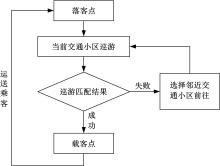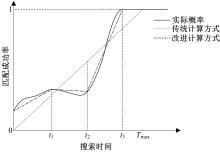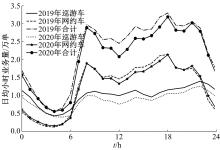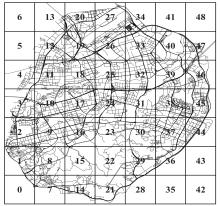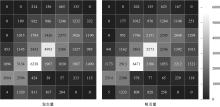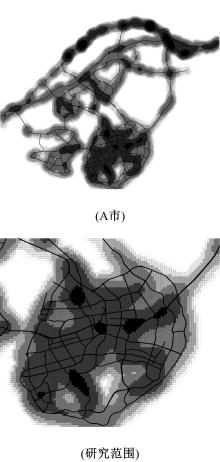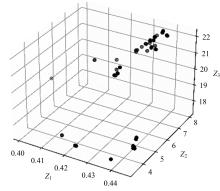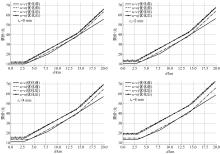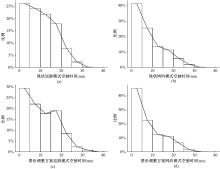Journal of Jilin University(Engineering and Technology Edition) ›› 2023, Vol. 53 ›› Issue (7): 1970-1980.doi: 10.13229/j.cnki.jdxbgxb.20211030
Optimization model of taxi fare structure under multi⁃mode taxi service network equilibrium
Hong-fei JIA( ),Fei YE,Li-li YANG(
),Fei YE,Li-li YANG( )
)
- College of Transportation,Jilin University,Changchun 130022,China
CLC Number:
- F570.5
| 1 | Yang H, Fung C S, Wong K I, et al. Nonlinear pricing of taxi services[J]. Transportation Research Part A: Policy and Practice, 2010, 44(5): 337-348. |
| 2 | He Fang, Wang Xiao-lei, Lin Xi, et al. Pricing and penalty/compensation strategies of a taxi-hailing platform[J]. Transportation Research Part C: Emerging Technologies, 2018, 86: 263-279. |
| 3 | Jin Yu-ming, Ye Xiao-fei, Liu Wen-li, et al. Dynamic pricing model for cruising taxicab based on system dynamics[J]. Advances in Mechanical Engineering, 2019, 11(2): 1-8. |
| 4 | 胡骥, 胡万欣, 蒋晶尧.放松规制下的出租车服务定价博弈模型[J].公路交通科技,2014,31(10) : 148-153. |
| Hu Ji, Hu Wan-xin, Jiang Jing-yao. Game model of taxi service pricing based on deregulation[J]. Journal of Highway and Transportation Research and Development, 2014, 31(10): 148-153. | |
| 5 | Hrl S, Becker F, Axhausen K W. Simulation of price, customer behaviour and system impact for a cost-covering automated taxi system in Zurich[J]. Transportation Research Part C Emerging Technologies, 2021, 123(3): No.102974. |
| 6 | Hu Bei-bei, Xia Xuan-xuan, Sun Hui-jun, et al. Understanding the imbalance of the taxi market: from the high-quality customer's perspective[J]. Physica A: Statistical Mechanics and its Applications, 2019, 535: No.122297. |
| 7 | Bai J R, So K C, Tang C S, et al. Coordinating supply and demand on an on-demand service platform with impatient customers[J]. Manufacturing & Service Operations Management, 2019, 21(3): 479⁃711. |
| 8 | 李娟, 靳文舟, 裴明阳."互联网+"时代下出租车运价结构优化调整研究[J].公路与汽运, 2016(3): 72-76. |
| Li Juan, Jin Wen-zhou, Pei Ming-yang. Research on optimization and adjustment of taxi freight price structure in the age of "internet +" [J].Highway and Automotive Applications, 2016(3): 72-76. | |
| 9 | 赵道致, 杨洁, 李志保.考虑等待时间的网约车与出租车均衡定价研究[J].系统工程理论与实践, 2020,40(5): 1229-1241. |
| Zhao Dao-zhi, Yang Jie, Li Zhi-bao. Research on the equilibrium pricing of online car-hailing and taxi services considering the waiting time[J]. Systems Engineering-Theory & Practice, 2020, 40(5): 1229-1241. | |
| 10 | 边扬, 王炜, 陆建.城市出租车运营网络平衡模型[J].交通运输工程学报, 2007, 7(1): 93-98. |
| Bian Yang, Wang Wei, Lu Jian. Equilibrium model of urban taxi service network[J]. Journal of Traffic and Transportation Engineering, 2007, 7(1): 93-98. | |
| 11 | 曹祎, 罗霞. 考虑手机召车软件的城市出租车网络均衡研究[J]. 交通运输系统工程与信息, 2016, 16(2): 70-76. |
| Cao Yi, Luo Xia. Equilibrium model of urban taxi service network with the influence of taxi-hailing applications[J]. Journal of Transportation Systems Engineering and Information Technology, 2016, 16(2):70-76. | |
| 12 | Yang Hai, Lau Y W, Wong S C, et al. A macroscopic taxi model for passenger demand, taxi utilization and level of services[J]. Transportation, 2000, 27(3): 317-340. |
| 13 | Wong K I, Wong S C, Yang Hai. Modeling urban taxi services in congested road networks with elastic demand[J]. Transportation Research Part B: Methodological, 2001, 35(9): 819-842. |
| [1] | Qiang GUO,Ming-song LI,Kai ZHOU. Multi⁃mode radar signal sorting based on potential distance graph and improved cloud model [J]. Journal of Jilin University(Engineering and Technology Edition), 2022, 52(8): 1904-1911. |
| [2] | Guang-ming NIE,Bo XIE,Yan-tao TIAN. Design of cooperative adaptive cruise control algorithm based on Frenet framework [J]. Journal of Jilin University(Engineering and Technology Edition), 2022, 52(7): 1687-1695. |
| [3] | De-feng HE,Jie LUO,Xiao-xiang SHU. Delay-feedback predictive cruise control of autonomous and connected vehicles [J]. Journal of Jilin University(Engineering and Technology Edition), 2021, 51(1): 349-357. |
| [4] | LI Ye, WANG Wei, XING Lu, WANG Hao, DONG Chang-yin. Improving traffic efficiency of highway by integration of adaptive cruise control and variable speed limit control [J]. 吉林大学学报(工学版), 2017, 47(5): 1420-1425. |
| [5] | GAO Zhen-hai, YAN Wei, LI Hong-jian, WANG Da-zhi, WANG Lin. Design of linear parametrically varying headway control algorithm for ACC vehicles [J]. 吉林大学学报(工学版), 2016, 46(4): 1023-1029. |
| [6] | LENG Xin, ZHU Qi-dan. Multi-model predictive control of drum water level in marine supercharged boiler based on dynamic compensation by radial basis function neural network [J]. 吉林大学学报(工学版), 2011, 41(05): 1450-1455. |
| [7] | WANG Qing-nian,YU Yong-tao,ZENG Xiao-hua,YU Yuan-bin. Development of forward-looking simulation platform for hybrid electric vehicle based on software CRUISE [J]. 吉林大学学报(工学版), 2009, 39(06): 1413-1419. |
| [8] | Li Xiang-yu,Gao Zhen-hai, Yuan Chang-bi, Qiao Yan-juan . Environmental evaluation of vehicle cruise control [J]. 吉林大学学报(工学版), 2008, 38(增刊): 28-0031. |
| [9] |
ZENG Xiao-hua, YU Yong-tao, WANG Jia-xue,WANG Qing-nian, WANG Peng-yu .
Modelling and simulation of active and synchronized gear-shift of hybrid electric bus based on CRUISE [J]. 吉林大学学报(工学版), 2008, 38(05): 1015-1019. |
| [10] | Zhan Jun. Setup of vehicle longitudinal dynamic model for adaptive cruise control [J]. 吉林大学学报(工学版), 2006, 36(02): 157-0160. |
| [11] | GUAN Xin, WANG Jing-wu, GAO Zhen-hai. Vehicle adaptive cruise control system based on optimal preview acceleration decision making [J]. 吉林大学学报(工学版), 2004, (2): 189-193. |
|
||
